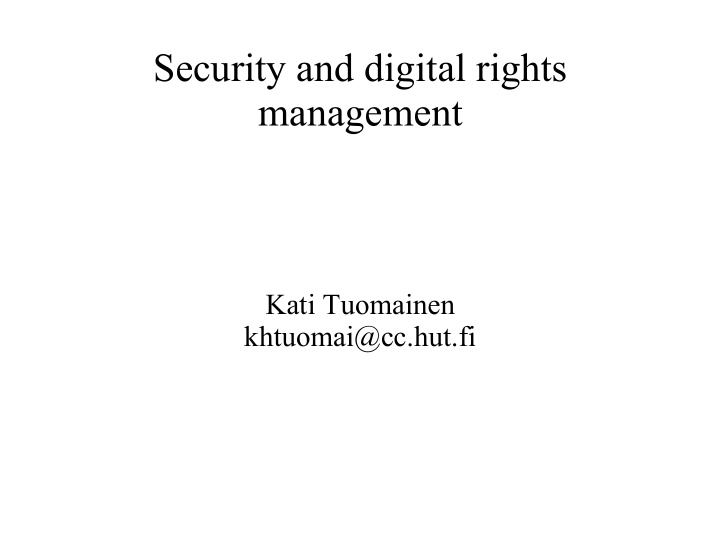



Security and digital rights management Kati Tuomainen khtuomai@cc.hut.fi
Agenda ● Introduction ● Content based media security ● What is DRM? ● How do DRM systems work? ● DRM models ● Mobile DRM ● Concluding remarks
Introduction ● Computer security protects information on the computers ● Network security protects information while it is being transmitted over the network ● Content security protects intellectual rights at application or presentation layers utilizing security mechanisms generally used in computer and network security
Security services ● Confidentiality ● Integrity ● Authentication ● Antipiracy protection ● Access control ● Nonrepudiation ● Availability
Content based media security ● Characteristics of the information to be protected vary ● Protection is tied to a higher level of the content ● sematic information is added to assure intended use
DRM 1/2 ● Digital management of user rights to content or of the content owners rights to the use of the content ● Linking specific user rights you wish to control to the media – Viewing – Duplication – Access – Distribution rights – ....
DRM 2/2 ● DRM links content to users and their rights ● Content is seen as the intellectual property or work ● Users are all the parties involved in the content distribution chain ● Rights are the permissions, constraints, and obligations a user has
Content value chain
DRM building blocks ● Encryption ● Digital signatures ● Digital watermarking and fingerprinting ● Metadata ● Security protocols
DRM distribution models ● Download ● Peer-to-peer ● Multicast ● DVB
DRM models ● Subscribtion based ● Promotion ● Pay per view ● Micropayment ● Floating licences ● superdistribution
Mobile DRM ● Mobile environments place their own requirements on DRM systems ● MDRM can be based on – Rights enforcement – System architectures – Usage rules – DRM models – Content variety or value – Security levels
Concluding remarks ● The challenge in creating DRM systems is to find the balance between the protection of the information, and the cost, as well as usability ● The goal of DRM is to facilitate electronic marketing, not to create an unbreakable protection
Recommend
More recommend